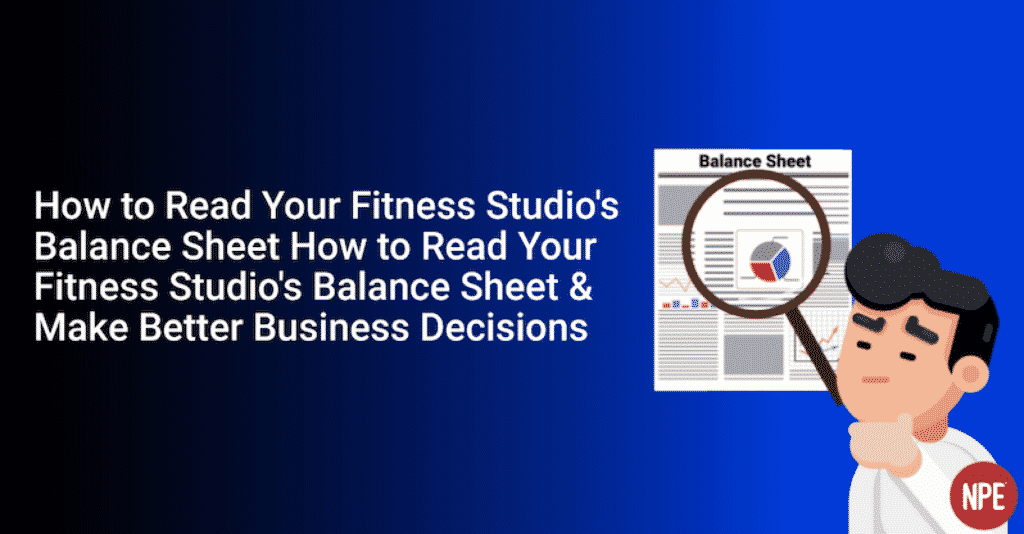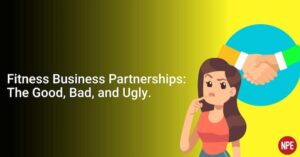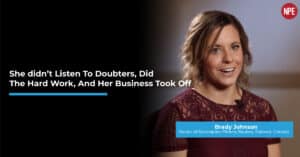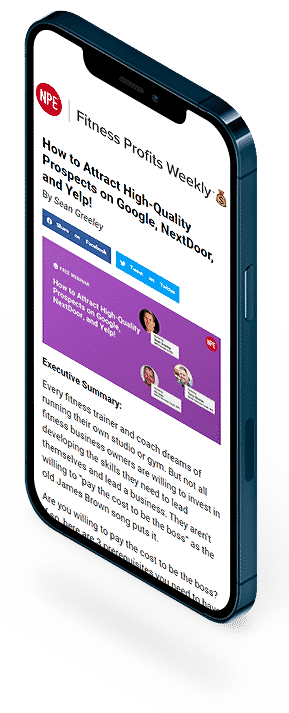How to Read Your Fitness Studio's Balance Sheet & Make Better Business Decisions
By Sean Greeley

Most people don’t know what a balance sheet is or how it works. But if you want to understand the VALUE of your business, then you need to know and understand how to read your balance sheet. We’ll break it down for you.
++++++++
What is your business’s financial position today?
Good, bad, who knows …
If a bank officer, investor, or potential partner asked you that question, how could you show the answer to them?
You’d use a financial statement called a balance sheet, and like all financial statements, they are critical in making strategic business decisions.
And also like all financial statements, most fitness business owners hate doing them … and even when prepared by others (your accountant), owners typically just take a glance at them and then move on to something more interesting (like marketing).
And in a fitness studio, there’s always something more interesting.
But ignoring balance sheets is a bad idea.
Too many fitness business owners (and business owners in general) fail to recognize when their financial position is getting weak. Too many ignore the signs of trouble until it’s too late.
In this exclusive look inside balance sheets, we’ll show you (1) why a balance sheet matters, (2) how to read one, and (3) red flags/what to watch out for.
What is it and how do you read one?
A balance sheet tells you the financial position of a company, on a specific day. (Usually, you’ll be looking at that snapshot (and changes since the last snapshot) at least year-end, quarterly and monthly.)
There are three parts:
1. Your assets: You have short-term assets, such as cash (bank account balance), short-term investments (CD as an example), accounts receivable (A/R – what your clients are invoiced but haven’t paid), inventory, and prepaid expenses.
And you may have long-term assets, such as fixed assets (equipment, buildings, land), long-term investments, and “intangible” assets (this might be the value of a brand name or intellectual property like proprietary fitness programming methods).
2. Your liabilities: You have short-term liabilities (you must pay within 12 months). These include accounts payable (i.e., your bills), interest payable, wages payable, credit cards, and loan balances due within the next 12 months.
And you have long-term liabilities: These are loan balances due after 12 months and if you have a lease term longer than 12 months, it’s the balance remaining (If you have a 36 month lease – 24 months is in long-term liability).
3. Your Owner’s Equity: This is your “equity” in the business–how much your ownership stake is worth.
Often this includes the amount you’ve invested in the business, especially in the startup phase. Ultimately, however, it’s what’s leftover when you subtract your total assets from your liabilities.
Now you take those three and put the numbers in the following accounting equation:
Assets = Liabilities + Owner’s Equity
That’s the form of the balance sheet.
Remember to include ALL your assets, but more importantly, ALL your liabilities.
In general, if you collected all the right information, you will know your assets and your liabilities.
The difference between the two is your Owner’s Equity.
That’s how much your business is worth, assuming you have a 100% stake in the equity of the business.
Let’s look at a simple example.
You have $50,000 in assets. You add up all your liabilities and it’s $50,000. There’s no difference.
Assets = Liabilities + Owner’s Equity
$50,000 = $50,000 + ?
(-$50,000) = (-$50,000) + 0
Do the math. Subtract Liabilities, in this case, $50,000, from both sides of the equation. You’ll see Owner’s Equity is zero.
Examples
Let’s take a look at a few more examples.
Scenario 1: The day before startup
- You just started a business.
- You invest $50,000 in your business and obtain a 1-year loan for another $50,000.
- You haven’t spent any funds yet.
You do a balance sheet for your startup day.
Assets (Cash): $100k = Liabilities (Short-term loan) $50k + Owner’s Equity (Capital Contribution): $50k
A ($100k) = L($50k) + OE ($50k)
You still have your initial “bankroll”, and that’s both your Assets and your Owner’s Equity.
Scenario 2: One year in
- The year is over and you need to prepare a December 31, 20XX balance sheet.
- You paid off the loan.
- You earned a $25,000 profit.
- No other assets or liabilities were acquired
You do a balance sheet:
Assets (Cash): $75k = Liabilities (Short term loan) 0 + Owner’s Equity (Capital Contribution: $50k) + (Profit Earned) $25k
Balance Sheet
Assets ($75k) = Liabilities ($0) + OE ($75k)
As you can see, you have your initial investment $50k and added another $25k in value to your company. Your company has cash and no liabilities. You had a good year.
Scenario 3: 5 years later
Assets
Cash $10k
A/R $20k
Inventory $30k
Fixed Assets $100k
Liabilities
Accounts payable $50k
ST loan balance $50k
LT Loan balance $75k
What’s the Owner’s Equity?
Add up the assets: $10k + $20k + $30k + $100k = $160k
Add up the liabilities: $50k + $50k + $75k – $175k
Assets $160k = Liabilities $175 + Owner’s Equity (-$15k)
You have to balance the equation so that one side always equals another, like a see-saw.
Five years in, the fitness business owner here has increased assets, but liabilities have increased even more … meaning the business is $15k in the red. As the owner, that’s your negative Owner’s Equity.
Note: There’s a potential for mischief on the “intangible” assets side. Don’t do this. Keep it simple and stick to hard (tangible) numbers. If you can’t sell it, it’s not an asset.
Red Flags
A balance sheet is like a checkup for your business. Here are the 3 biggest “red flags” that your business needs help.
1. Low Cash Balance. You need cash to keep going. Even if you have assets, you will need healthy amounts of cash to keep going. We recommend having two month’s operating expenses available in cash. Or at the very least one month in cash and the other available in capital. (See Cash Flow Forecasting for more information)
Increase your cash balance by generating more profits, collecting on your accounts receivable, selling off inventory, or obtaining financing if needed.
2. Low Working Capital. This is your current assets minus your current liabilities. If this number is low, or a negative number, then it will be difficult to payoff your short-term liabilities (i.e. amounts owed to vendors, debt repayments due in the next 12 months, etc.) in your current financial position.
Improve your working capital by reducing expenses (look at your short-term liabilities), increase profits, or refinance short-term debt to long-term.
3. Negative Owner’s Equity balance. Remember that the only way to decrease your owner’s equity balance is through distributions (paying yourself outside of payroll) or by generating a new loss in your business. Negative owner’s equity is generally indicative of a company incurring losses over time.
Two ways to increase owner’s equity: (1) Make a capital contribution to your company (i.e., deposit cash into your business from your personal account). (2) Generate profits in your business and leave the profits in your business (as opposed to withdrawing the funds as a distribution–called retained earnings).
Two ways to decrease owner’s equity: (1) Generate a loss in your business (2) Withdraw funds as a distribution.
Next Actions
At NPE, we show our fitness business clients how to best use (and efficiently create) all financial statements, including Balance Sheets. And then we show you how to use Balance Sheets as part of your financial health reporting.
Our clients become experts in understanding the numbers so they aren’t caught flat-footed.
They can spot and address issues, identify 2-3 priorities at a time to improve net profit, and then make a plan to implement strategies.
To learn more about learning to tell your fitness business story “by the numbers” schedule a call with an NPE Success Coach.
Our NPE Success Coaches have all “been there, done that” in the fitness industry and now they’re bringing their expertise to help fitness business owners like yourself clear away their biggest obstacles and show a new path forward.
When you don’t have a background in finance, it can seem overwhelming to learn, set-up, and understand. But don’t let that stop you. Winners don’t avoid challenges; they face them head-on.
Take charge of getting your financial house in order by scheduling a call with an NPE Success Coach today. And then get ready to grow your fitness business and create the life you want.







